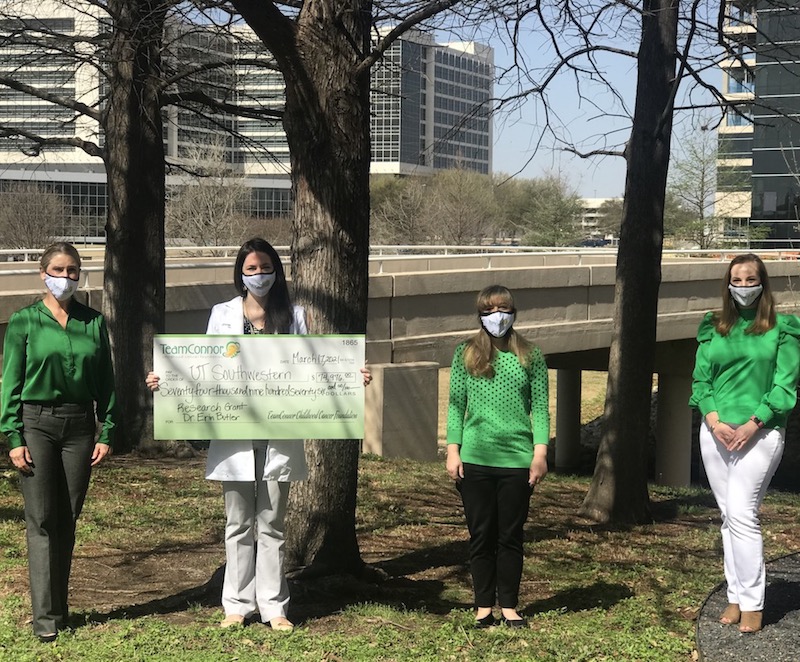Research Summary by Erin Butler, M.D.


TeamConnor Childhood Cancer Foundation Grant – 2021
For children with cancer, rhabdomyosarcoma (RMS) is the most common form of soft tissue sarcoma and the second most common form of solid tumors. Despite intensive radiation, chemotherapy and surgical treatments, the outcome for children with widely metastatic or recurrent RMS is dismal. And, current therapies are associated with moderate to severe long-term side effects.
The strong need continues for increased insight into novel therapies for children diagnosed with RMS. There are many factors which predict the outcome and guide therapy, including age at diagnosis, location of the primary tumor, and the extent of disease. More recently, the presence of a fusion gene, PAX-FOXO1, within a child’s RMS tumor has been implicated in more aggressive disease (and prognosis is much worse with current standard therapies of cytotoxic chemotherapy). Dr. Butler’s project proposes to investigate a novel therapy in both cell lines and patient derived xenografts (PDX) that possess this fusion protein.
The project will specifically focus on the use and efficacy of a new therapeutic agent that targets the FGFR4 protein in pediatric RMS where the PAX-FOXO fusion protein is present, so-called “fusion positive” RMS. This drug inhibits the activity of FGFR4, fibroblast growth factor 4 (a protein expressed in high levels in fusion positive RMS) and other forms of adult and pediatric cancers.
The increased expression of the protein is thought to lead to increased activity of the protein and promote cancer cell growth and cancer survival. To assess efficacy of this drug, fusion positive RMS cells will be implanted into immunocompromised mice. Once tumors begin to grow, the mice will be treated with either drug or placebo, and tumors will be measured frequently. After completion of the experiment, the two groups will be compared to determine if the drug delays tumor growth or may even shrink the tumors.
The tumors will then be analyzed for various protein expression levels and markers of cell death to determine if the drug is working to delay cancer progression or kill cancer cells. In addition to using fusion positive cancer cells, Dr. Butler will also use PDXs with fusion positive RMS for a total of four different fusion-RMS treatment arms. If the drug has efficacy in slowing tumor growth, it can then be studied in fusion RMS models coupled to cytotoxic chemotherapy with plans to start a clinical trial in pediatric patients with relapsed or refractory fusion positive RMS.
